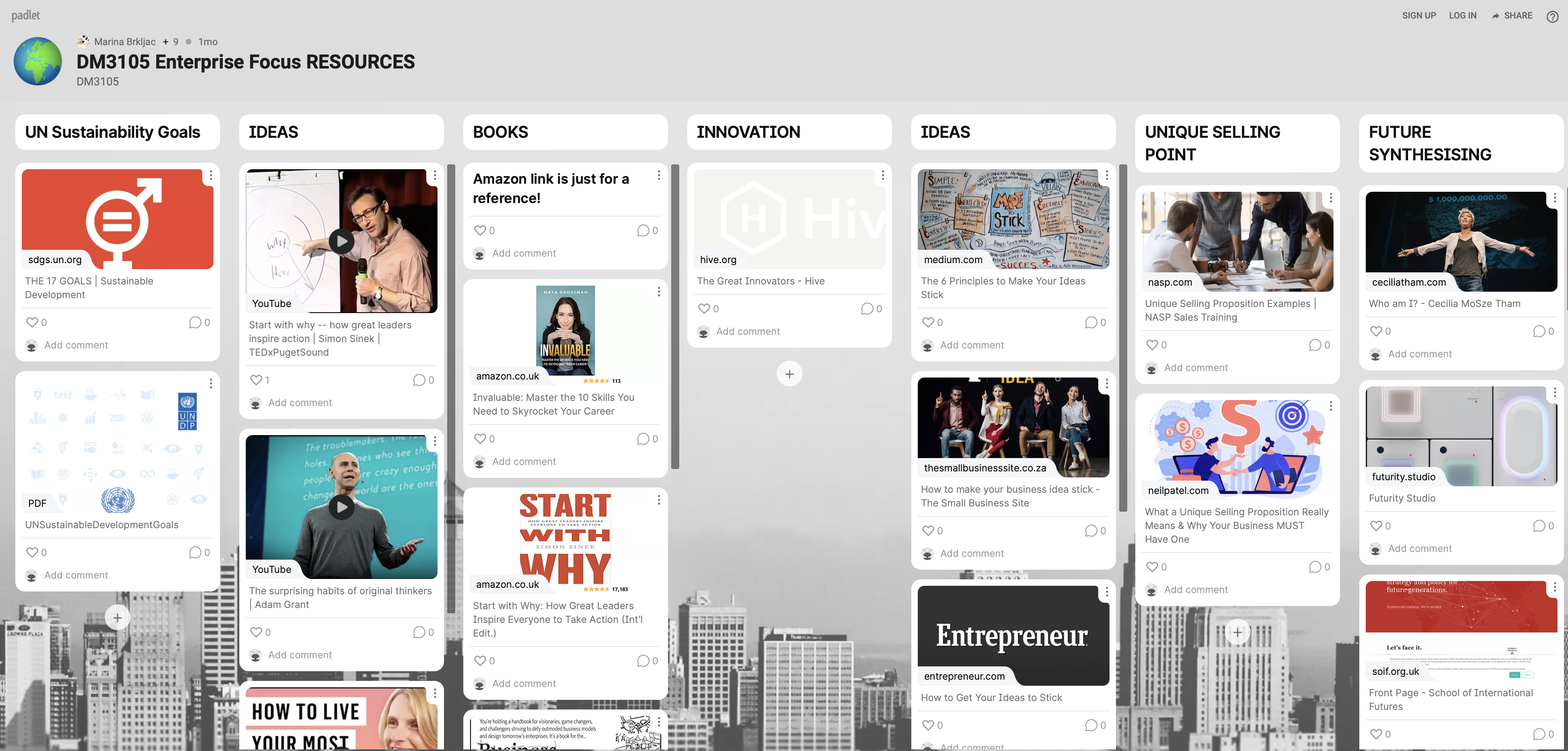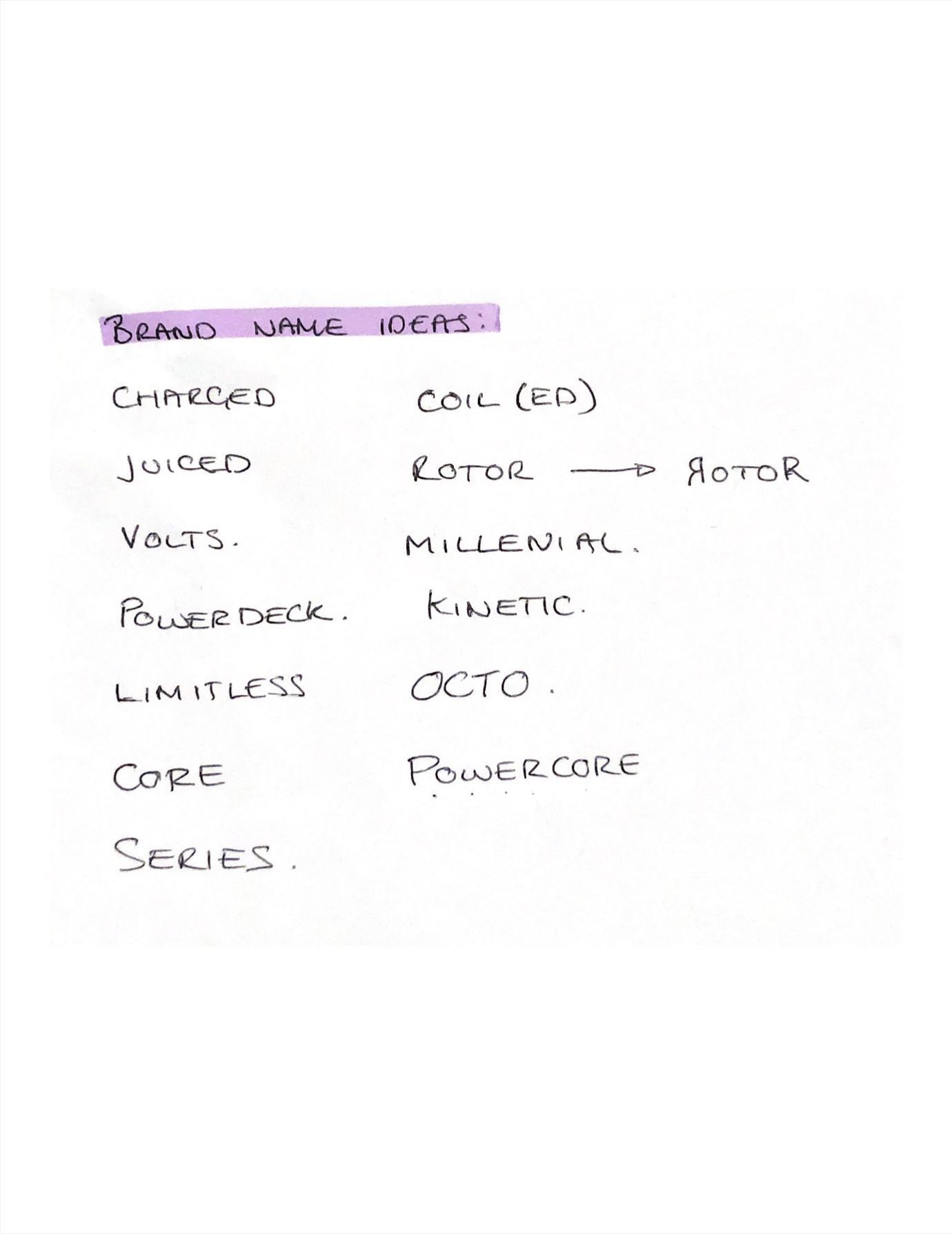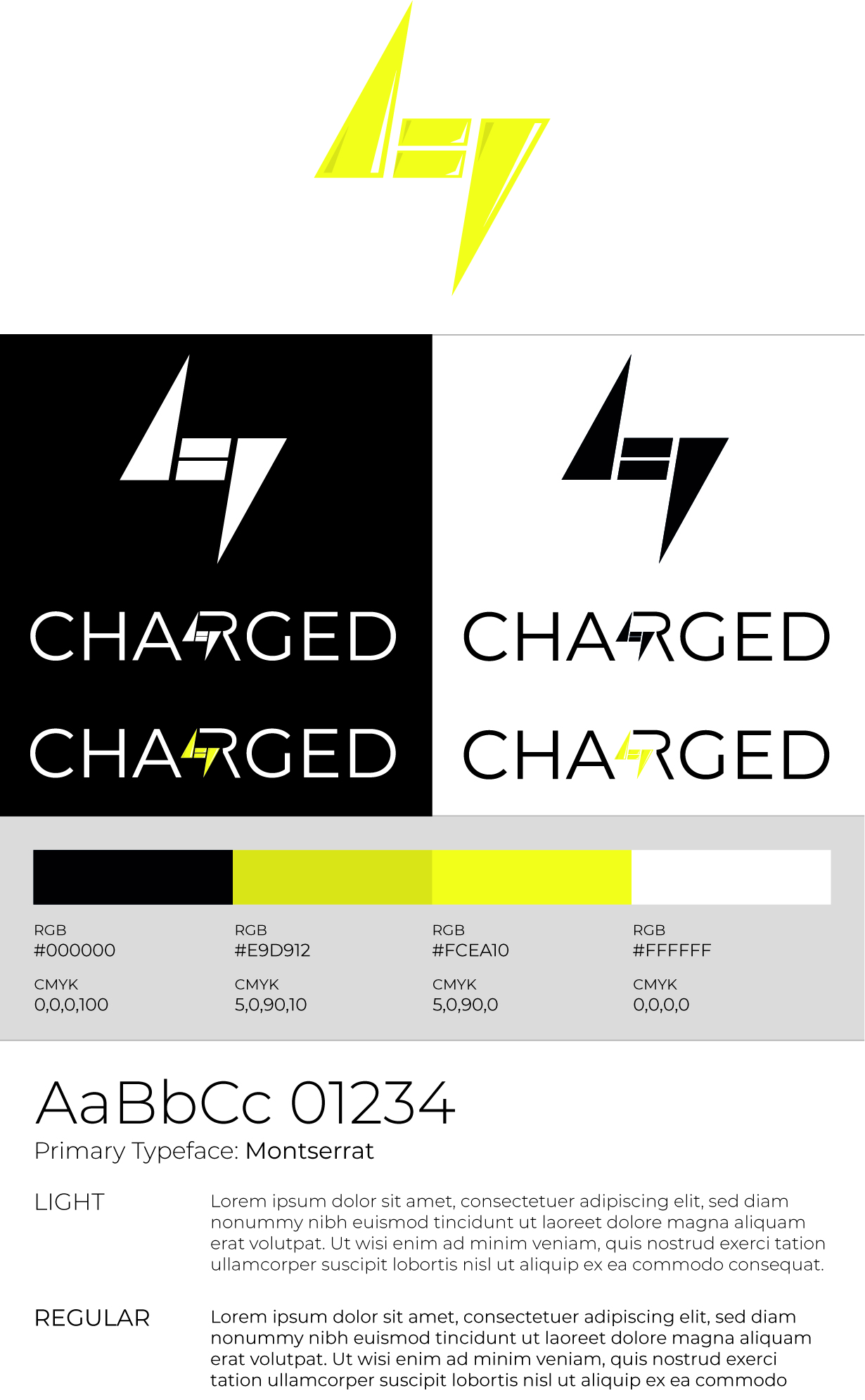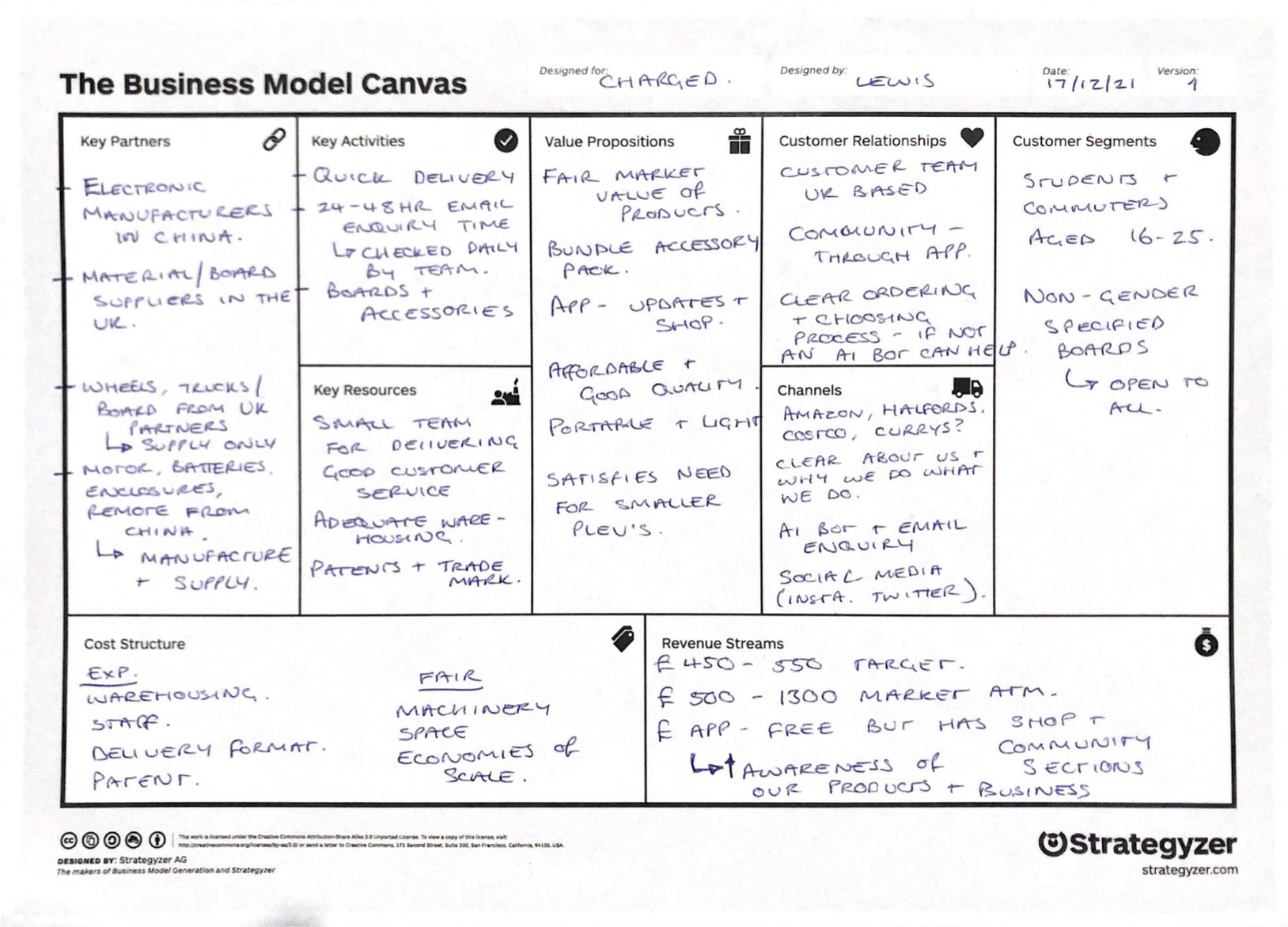Initially, I struggled to brainstorm ideas for a suitable product or service since most products have either been created or have already succeeded and saturated the market. Therefore, I utilised the padlet board (as pictured below) created by our lecturer and viewed the links to various resources to help in the brainstorm stage of the plan. Adam Grant presents a ted talk on original thinking where he states "It's much easier to improve on somebody else's Idea than to create something new from scratch. So the lesson I learned is that to be original you don't have to be first, you just have to be different and better" (TED, 2016). With this in mind, I decided rather than creating a completely new, innovative product, it would be more beneficial from my standpoint to improve upon an already existing product or service. To reinforce this mindset, Simon Sinek reiterates how companies, such as Apple, expand and market their products to show why their products will benefit the market rather than focusing on what products to make.

















